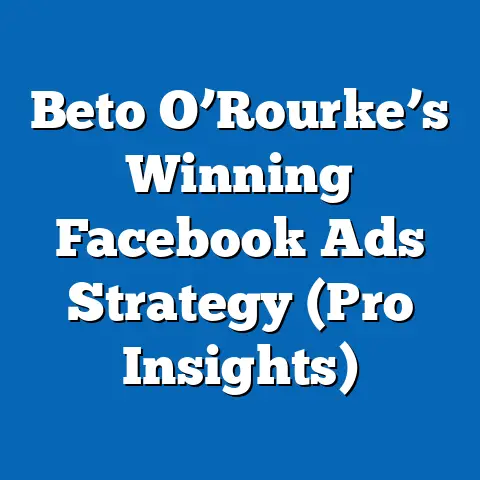Unlocking Facebook Ad Credit Codes (Essential Insights)
In the realm of generational studies and demographic trends, seemingly niche topics like “waterproof options” can serve as a unique lens to explore broader societal shifts, technological advancements, and cultural values. While the term “waterproof options” may initially appear unrelated to generational analysis or digital advertising strategies like unlocking Facebook ad credit codes, it metaphorically reflects the adaptability and resilience of different generations in navigating modern challenges, including the digital marketing landscape. Waterproofing, as a concept, symbolizes the protective mechanisms and innovative strategies individuals and businesses employ to safeguard their interests—whether it’s protecting physical goods from environmental damage or securing digital investments like advertising credits in an ever-evolving online ecosystem.
Waterproof Options: Defining Characteristics and Historical Context
Waterproof options, in their literal sense, refer to products, technologies, or strategies designed to resist water damage, ensuring durability and functionality in challenging environments. This concept emerged as a significant innovation during the Industrial Revolution in the 18th and 19th centuries when advancements in materials science led to the development of water-resistant fabrics, coatings, and construction techniques. The invention of vulcanized rubber by Charles Goodyear in 1839, for instance, marked a turning point, enabling the production of waterproof clothing and equipment that transformed industries like shipping, exploration, and outdoor labor.
Historically, the need for waterproof solutions was driven by societal demands for resilience against natural elements, particularly in regions prone to harsh weather conditions. The 20th century saw further innovation with synthetic materials like Gore-Tex, introduced in the 1970s, which combined breathability with water resistance, catering to both practical and recreational needs. These developments were not merely technological but also cultural, reflecting a growing societal emphasis on mobility, exploration, and preparedness—values that resonate across generations but manifest differently based on historical experiences.
For older generations like Baby Boomers (born 1946–1964), waterproof options often symbolized reliability and practicality, shaped by post-World War II economic recovery and a focus on durable consumer goods. For Generation X (born 1965–1980), such innovations aligned with a rise in outdoor culture and individualism, while Millennials (born 1981–1996) and Generation Z (born 1997–2012) have embraced waterproof technology as part of a tech-savvy, on-the-go lifestyle, often integrating it into smart devices and wearable tech. This generational divergence highlights how a single concept can carry varied significance, influenced by the economic, social, and technological contexts of each era.
Societal Implications of Waterproof Options
The societal implications of waterproof options extend beyond mere functionality, touching on themes of adaptability, sustainability, and economic disparity. As climate change intensifies, with rising sea levels and extreme weather events impacting millions globally, the demand for waterproofing in infrastructure, housing, and personal goods has surged. According to a 2022 report by the World Bank, over 1.8 billion people live in areas at high risk of flooding, underscoring the critical role of such technologies in modern life.
However, access to waterproof solutions often reflects socioeconomic divides, with wealthier communities and individuals better equipped to invest in high-quality protective gear or resilient infrastructure. This disparity mirrors broader generational and demographic challenges, where younger generations like Gen Z, often burdened by student debt and economic instability, may struggle to afford such innovations compared to older, more financially established cohorts like Baby Boomers. The cultural narrative around waterproofing also ties into environmental consciousness—a value particularly strong among Millennials and Gen Z—who advocate for sustainable materials and production methods in response to the environmental cost of synthetic waterproofing agents.
Metaphorically, the concept of waterproofing translates to the digital realm, where individuals and businesses seek to “protect” their investments and strategies from the unpredictable tides of online markets. Just as physical waterproofing shields against environmental damage, unlocking and utilizing tools like Facebook ad credit codes serves as a safeguard for marketing budgets, ensuring maximum return on investment (ROI) in a volatile digital landscape. This parallel sets the stage for a deeper exploration of digital advertising strategies, particularly within the context of generational behaviors and technological adoption.
Transition to Digital Waterproofing: The Role of Facebook Ad Credits
In the digital age, businesses face a different kind of “storm”—the rapid evolution of online platforms, shifting consumer behaviors, and intense competition for visibility. Facebook, now under the Meta umbrella, remains a dominant force in digital advertising, with over 2.9 billion monthly active users as of 2023, according to Statista. For businesses of all sizes, advertising on this platform is a critical means of reaching diverse audiences across generational lines, from tech-savvy Gen Z users to older demographics like Baby Boomers who have increasingly adopted social media.
Facebook ad credits, often provided as promotional incentives or rewards, represent a form of digital currency that can offset advertising costs, effectively “waterproofing” a company’s marketing budget against financial overextension. These credits can be unlocked through various means—such as participating in Meta’s promotional campaigns, partnering with third-party services, or meeting specific eligibility criteria. However, the process of obtaining and utilizing these credits is often shrouded in complexity, requiring a nuanced understanding of platform policies, generational marketing trends, and strategic planning.
Much like physical waterproofing, the pursuit of ad credits reflects a broader societal trend toward resource optimization and resilience. Different generations approach this digital tool with unique perspectives: Millennials and Gen Z, as digital natives, may view ad credits as a natural extension of their online savviness, while older generations might approach them with caution, shaped by less familiarity with digital ecosystems. Understanding these generational nuances is key to crafting effective advertising strategies that resonate across demographics.
Unlocking Facebook Ad Credit Codes: Mechanisms and Strategies
Unlocking Facebook ad credit codes involves navigating a series of steps and opportunities, often tied to Meta’s promotional initiatives or partnerships. These credits are typically offered to new advertisers as an incentive to test the platform, to existing users during specific campaigns, or through collaborations with hosting providers, payment processors, or marketing agencies. For instance, businesses might receive a code worth $50 to $500 upon signing up for a new ad account or spending a certain amount within a specified timeframe.
To unlock these credits, users must first ensure eligibility, which often includes having a verified business account, adhering to Meta’s advertising policies, and operating within supported regions. Codes are usually distributed via email, in-platform notifications, or third-party promotions, and they must be redeemed within a designated period to avoid expiration. According to a 2021 survey by Hootsuite, nearly 40% of small businesses reported challenges in accessing or applying ad credits due to unclear instructions or technical glitches, highlighting the need for better education and support in this area.
Strategically, businesses must align their use of ad credits with broader marketing goals, targeting audiences based on generational preferences and behaviors. For example, a campaign targeting Gen Z might focus on short, visually engaging video ads on Facebook Stories, leveraging trends like influencer partnerships, while a campaign for Baby Boomers could prioritize informational carousel ads highlighting product reliability. By tailoring content to these demographics, businesses can maximize the impact of limited ad credit budgets, effectively waterproofing their digital outreach against wasted spend.
Generational Approaches to Digital Advertising and Ad Credits
Generational differences play a significant role in how businesses and individuals perceive and utilize tools like Facebook ad credits. Baby Boomers, shaped by traditional media and post-war economic growth, often value trust and credibility in advertising, preferring campaigns that emphasize testimonials or established brand narratives. While they may be less likely to seek out ad credits due to lower digital fluency, businesses targeting this demographic can benefit from credits by investing in straightforward, value-driven ads.
Generation X, often balancing career and family responsibilities, tends to appreciate efficiency and practicality in digital tools. They are more likely to experiment with ad credits if presented as a cost-saving measure, particularly for small business owners within this cohort. Their campaigns often blend traditional and digital elements, reflecting their transitional role between analog and digital eras.
Millennials, as the first digital-native generation, approach ad credits with a mix of enthusiasm and skepticism, shaped by their exposure to both the dot-com boom and the 2008 financial crisis. They value authenticity and social impact, often using ad credits to fund campaigns that align with causes or community engagement. According to a 2020 Pew Research study, 72% of Millennials are active on social media daily, making platforms like Facebook a prime channel for targeted advertising with credits.
Generation Z, the most digitally immersed cohort, views ad credits as a standard tool in a competitive online space. Raised during economic uncertainty and global connectivity, they prioritize creativity and immediacy, often using credits to test viral content or micro-campaigns. Their preference for platforms like Instagram (also under Meta) means businesses must integrate cross-platform strategies when deploying credits for this audience.
Technological, Economic, and Social Factors Influencing Ad Credit Use
The use of Facebook ad credits is influenced by a confluence of technological, economic, and social factors that vary across generations. Technologically, the platform’s evolving algorithms and ad formats—such as dynamic ads or augmented reality experiences—require continuous learning and adaptation, a process that can be daunting for less tech-savvy users. Meta’s investment in AI-driven targeting tools, however, allows even small businesses with limited budgets (via credits) to reach precise audiences, leveling the playing field to some extent.
Economically, the cost of digital advertising has risen significantly, with average cost-per-click (CPC) rates on Facebook increasing by 17% year-over-year as of 2022, per WordStream data. Ad credits offer a buffer against these rising costs, particularly for startups or small enterprises often run by younger generations facing financial constraints. However, the economic disparity between generations means that older business owners may have more capital to invest without relying on credits, while younger entrepreneurs view them as essential.
Socially, the growing emphasis on digital privacy and data ethics—driven largely by Millennials and Gen Z—has reshaped advertising norms. Meta’s response, including restrictions on third-party data tracking following Apple’s iOS updates in 2021, has made ad targeting more challenging, even with credits. Businesses must now focus on organic engagement and first-party data, using credits to experiment with content that builds trust rather than solely driving conversions.
Nuances and Diversity Within Generational Approaches
While generational categories provide a useful framework, it’s critical to acknowledge the diversity within each cohort. Not all Baby Boomers are tech-averse; many have adapted to digital tools out of necessity or curiosity, particularly during the COVID-19 pandemic when online platforms became lifelines for social connection and commerce. Similarly, not all Gen Z individuals are social media experts—socioeconomic background, education, and personal interests shape their digital engagement.
Cultural and geographic differences further complicate generational trends. For instance, businesses in urban areas with high internet penetration may leverage ad credits more aggressively than those in rural regions, regardless of the owner’s age. Additionally, global events like economic recessions or technological disruptions can blur generational lines, as seen during the rapid digital adoption spurred by the 2020 pandemic across all age groups.
Implications for Society, Culture, and the Workplace
The strategic use of Facebook ad credits has far-reaching implications beyond individual businesses, influencing societal norms, cultural trends, and workplace dynamics. Societally, the accessibility of ad credits democratizes marketing to an extent, allowing smaller players to compete with larger corporations, though disparities in digital literacy and resources persist. This mirrors the broader theme of waterproofing—protection and opportunity are available, but not universally equitable.
Culturally, the content funded by ad credits shapes narratives and values, particularly as younger generations drive trends around sustainability, inclusivity, and transparency. Ads targeting Gen Z, for instance, often emphasize social responsibility, reflecting and reinforcing cultural shifts toward ethical consumption. Businesses using credits must navigate these expectations carefully to avoid backlash or accusations of inauthenticity.
In the workplace, the reliance on digital advertising tools necessitates new skills and roles, from social media managers to data analysts, roles often filled by younger generations. This creates a generational divide in some industries, where older workers may feel pressured to upskill, while younger employees face intense competition in digital-first fields. Ad credits, as a low-barrier entry point, can help bridge this gap by enabling training and experimentation without significant financial risk.
Forward-Looking Insights and Uncertainties
Looking ahead, the landscape of Facebook ad credits and digital advertising will continue to evolve, shaped by technological innovation, regulatory changes, and generational shifts. Meta’s ongoing development of the metaverse, for instance, may introduce new advertising formats and credit opportunities, potentially redefining how businesses engage with audiences across age groups. However, uncertainties remain, including the impact of privacy regulations like the EU’s General Data Protection Regulation (GDPR) and potential shifts in platform dominance as younger generations gravitate toward newer apps like TikTok.
Generational dynamics will also play a pivotal role, as the incoming Generation Alpha (born 2013–present) grows into a hyper-digital cohort with distinct values and behaviors. Businesses must anticipate these changes, using tools like ad credits to test and adapt strategies in real time. While the metaphorical waterproofing of marketing budgets through credits offers a layer of protection, the unpredictability of digital trends means that resilience and flexibility will remain paramount.
Conclusion
Unlocking Facebook ad credit codes is more than a tactical maneuver—it’s a reflection of broader generational and societal trends toward adaptability, resource optimization, and digital resilience. By starting with the concept of waterproof options, we’ve traced a thread from historical innovations to modern digital strategies, highlighting how each generation navigates challenges with unique perspectives shaped by their context. As businesses leverage ad credits to protect and grow their online presence, they must remain attuned to the nuances of generational diversity, technological shifts, and cultural expectations.
Ultimately, the pursuit of digital waterproofing through tools like ad credits underscores a universal drive for security and success in an uncertain world. While the future holds unknowns, the insights gained from understanding generational dynamics and strategic advertising provide a foundation for navigating the storms ahead, ensuring that businesses—and the societies they serve—remain buoyant in the face of change.





